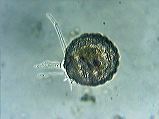
Palaeoecological diagram and reconstruction of water table depth & pH (Mitchell et al.cuspidatumĢ.6 -0.81 3.2 -1.3 The Hyalosphaeniidae as bioindicators Ecological preferences of some Hyalospheniidae in Sphagnum peatlands Axis 2 Nebela militaris Heleopera rosea Nebela tincta tincta Nebela flabellulum Axis 1 Nebela bohemica Hyalosphenia papilio Hyalosphenia elegans Nebela lageniformis Lamentowicz & Mitchell Microbial Ecology, 2005 Nebela carinata CCA analysis magellanicum Hummock Other mosses Water Table & other habitats Depth Conductivity S. Position of the Hyalosphaeniidae inside the Arcellinida ML tree, 100 bootstraps, ln(L)=-2744, 542 sitesĬCA plotting the different Sphagnum species against environmental data in peat bogs S. Many thanks also to the people who brought mosses samples from all over the world (from Machu Pichu to Northern Sweden and Marion Island!!!) and made this work possible.Funding: EU project RECIPE, University of Copenhagen.Colleagues from EPFL (Switzerland): Pierre Rossi, Christof Holliger and Andy Siegenthaler.Variable genetic markers are needed to infer the dispersal potential of testateamoebae=>cosmopolitanism versus endemism of protists?.Further work on the phylogeny with other genera and species:=> resolve remaining taxonomic uncertainties.No evidence for geographical genetic variation … at least in the SSU rRNA gene.Even subspecies are distinct! => what is the true diversity of testate amoebae?.All morphospecies have so far proven to be genetically distinct.ML tree, 500 bootstraps, ln(L)=-2621, 1406 sitesĬONCLUSIONS Evaluation of the identification criteria used for Hyalospheniidae taxa By aligning the sequences with the insertion, it is possible to resolve the phylogenetic position of closely related taxa.An insertion of about 450 bp is present in the SSU rRNA gene of the Hyalospheniidae.Paraphyly of generaNebela and Hyalosphenia ML tree, 100 bootstraps, ln(L)=-2646, 918 sitesĪ hard to sequence insertion yields precious phylogenetic information.All species are clearly genetically distinct.PCR with newly designed Arcellinida – and Hyalospheniidae specific primers.Isolation of 10-20 living amoebae from each species under inverted microscope.Are especially abundant and diverse in peatlands.Includes 6 genera among them Nebela (sensu lato), Hyalosphenia and Heleopera.of Eukaryotic Microbiol.įamily Hyalospheniidae (sensu Schultze, 1877) Testate amoebae are polyphyletic The Arcellinida The Euglyphida Filose pseudopodia Lobose pseudopodia (1) Adl, S.M. Often narrow ecological tolerance => useful for ecology and paleoecology.Feed on bacteria, fungi, micro-algae, rotifers, etc.Produce a shell (proteinaceous material or agglutinated mineral particles).General characteristics of testate amoebae => Need for baseline data: sequencing dominant species and establishing the phylogeny based on molecular data.Problem: almost no molecular data (DNA sequences) on testate amoebae.Focus on testate amoebae, the dominant group of heterotrophic protists in peatlands.Initial plan: to study the diversity of protists using molecular methods.

Why work on the phylogeny of testate amoebae in RECIPE? HEGER, Flemming EKELUND, Mariusz LAMENTOWICZ, Edward A. All rights reserved.Molecularphylogeny of the Arcellinida Enrique LARA, Thierry J. Tubulinea cryptic species testate amoebae.Ĭopyright © 2014 Elsevier GmbH. Our results suggest the morphological plasticity of testate amoebae across evolutionary time scales and that a combination of morphology and molecular analyses is needed to understand the biodiversity of these taxa.Īrcellinida SSU-rDNA phylogeny. Moreover, inclusion of up to 24 specimens per species indicates non-monophyly of the morphospecies Hyalosphenia papilio and Hyalosphenia elegans.

Our analyses confirm this pattern and further suggest that other Nebela genera and morphospecies are not monophyletic. Previous SSU-rDNA work on a limited sample of these species showed non-monophyly in the genus Hyalosphenia. An SSU-rDNA phylogeny including 20 specimens from GenBank and 63 from this study reveals diversity within and among morphospecies and low resolution among some Nebela spp. Here, we assess the biodiversity and relationships among eight morphospecies: Hyalosphenia elegans, Hyalosphenia papilio, Nebela carinata, Nebela flabellulum, Nebela militaris, Nebela tincta, Nebela tubulosa, and Quadrulella symmetrica using small subunit ribosomal DNA (SSU-rDNA). The recent application of molecular tools has revealed a greater complexity than morphology suggests, including multiple cryptic species. siliceous, proteinaceous, agglutinated, or even calcareous). Test morphology is standardly used to identify morphospecies as tests have varying shapes and compositions (e.g. Testate (shelled) amoebae are abundant and diverse in Sphagnum-rich areas of bogs and fens.


 0 kommentar(er)
0 kommentar(er)
